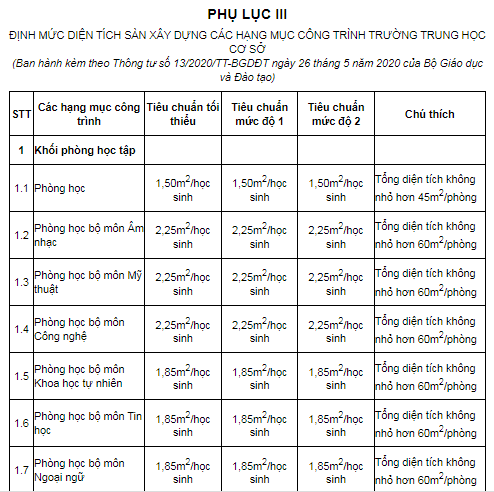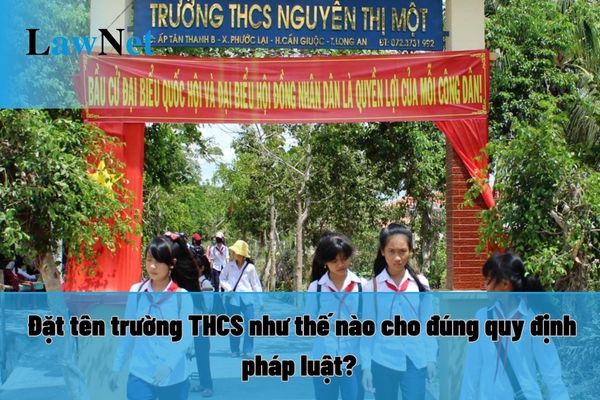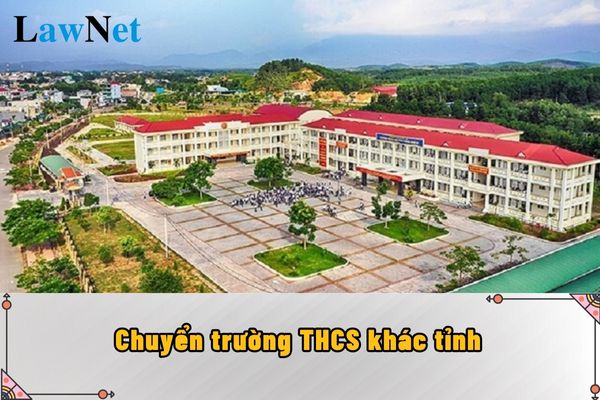Details on the standards for minimum facility standards of lower secondary schools in Vietnam
Details on the standards for minimum facility standards of lower secondary schools in Vietnam
Based on Article 40 of the Charter for lower secondary schools, upper secondary schools, and schools with multiple educational levels issued along with Circular 32/2020/TT-BGDDT, the facility standards for secondary schools are stipulated as follows:
facility of Secondary Schools
1. The facility and technical facilities of secondary schools must meet the minimum required standards for secondary schools as stipulated by the Ministry of Education and Training.
2. The school is responsible for developing a specific plan and roadmap to submit to the competent authority for approval to enhance the investment in facility to achieve higher standards.
3. The school is responsible for effectively managing and using its facility, avoiding waste; periodically planning for the renovation and upgrading of facility as stipulated; and must not use expired and unsafe facility that has not been repaired or renovated.
Additionally, according to Article 14 of the Regulations on the standards for facility of preschools, primary schools, lower secondary schools, upper secondary schools, and schools with multiple educational levels issued along with Circular 13/2020/TT-BGDĐT, the facility of lower secondary schools must meet the following minimum requirements:
*Administrative and Management Area
- Principal's office must have a working office with all necessary office equipment as per current regulations;
- Vice Principal's office must have all necessary office equipment as per current regulations;
- Office must have one office with all necessary office equipment as per current regulations;
- Security office: must have one office located near the school's entrance with a convenient observation position;
- Restrooms for teachers, staff, and employees: arranged in functional areas with separate facilities for men and women; equipment quantity: for men - 1 urinal/15 people, 1 toilet/20 people, 1 washbasin/4 toilets but not less than 1; for women - 1 toilet/15 people, 1 washbasin/2 toilets but not less than 1. Independent restrooms should be conveniently located without affecting the environment;
- Parking area for teachers, staff, and employees must have a covered area and enough space for all school staff.
*Learning Area
- Classrooms must ensure at least 0.6 classrooms per class; fully equipped with student desks and chairs that meet standards and provide enough seating for students, teacher's desk and chair, blackboard, lighting system, and fan system;
- Music subject-based room: at least 1 room;
- Art subject-based room: at least 1 room;
- Technology subject-based room: at least 1 room;
- Natural Science subject-based rooms: at least 2 rooms;
- Computer subject-based room: at least 1 room;
- Foreign Language subject-based room: at least 1 room;
- Multi-functional classroom: at least 1 room.
*Support Learning Area
- Library: each school must have at least 1 library, each site must have a shared bookcase; the library must have functional areas: book storage, management area (work area for library staff), reading area for teachers and students;
- Educational equipment room: at least 1 room; equipped with shelves and cabinets to store and preserve teaching equipment for the whole school;
- Counseling and support room for students with disabilities: at least 1 room located on the first floor;
- Tradition room: at least 1 room; fully equipped;
- Youth and Pioneer Organization room: at least 1 room; fully equipped; It can be combined with the tradition room.
*Auxiliary Area
- Meeting room for all school staff: at least 1 room, fully equipped as per current regulations;
- Faculty rooms: at least 1 shared room for all faculties or at least 2 rooms for schools with more than 30 classes; fully equipped as per current regulations;
- School health room: at least 1 room; equipped with a medicine cabinet containing essential drugs, first aid tools, and a bed;
- Storage room: at least 1 room; for storing common tools and school supplies;
- Student parking area must have a covered area; arranged with a designated area for students with disabilities near the entrance;
- Student restrooms: arranged in functional areas with separate facilities for men and women, ensuring accessibility for students with disabilities; equipment quantity: for boys - 1 urinal and 1 toilet and 1 washbasin for 30 students (or 0.6m length of urinal for 30 students), with a wall/partition between urinal and toilet; for girls - 1 toilet and 1 washbasin for 20 students. Separate restrooms should be conveniently located without affecting the environment;
- Gate and fence: the school or site must be separated from the outside by a protective fence (brick wall or green fence), ensuring sturdiness and safety, the school or site gate must be firm and sturdy to mount the gate and the school nameplate.
*Playgrounds and Sports Areas
- A common playground for the school to organize school-wide activities; must be flat and shaded by trees;
- Sports playground with safety measures and equipped with exercise tools and equipment for students.
*Living Area
- Kitchen (for schools that organize cooking): independent from the learning and support learning areas; one-way workflow, hygienic;
- Kitchen storage (for schools that organize cooking): separate food and grain storage; convenient independent entry and exit for goods, and separate areas for different types of food; equipped with food preservation devices;
- Cafeteria (for boarding schools) must serve students; fully equipped;
- Dormitory for boarding students must provide enough rooms for sleeping, including restrooms and showers; separate areas for boys and girls; fully equipped;
- Student management room (for boarding schools) must be located in the dormitory area, for teachers to manage boarding students;
- Common room (for boarding schools) must be located in the dormitory area, near student dormitories; fully equipped.
*Technical facility
- Clean water supply system must meet usage needs, ensure regulations and quality standards of water; drainage, collection, and waste treatment systems must meet quality standards before discharge into the environment;
- Power supply system must ensure sufficient capacity and safety for school activities;- Fire safety system: must comply with current regulations;
- Information technology and communication facility: telephone; internet connection for school activities;
- Waste collection area must be independent, away from functional areas, at the end of the wind direction; with a separate entry and exit, convenient for waste collection and transportation; with a separate drainage system, not affecting the environment. There must be a separate collection area for hazardous chemicals and laboratory waste.
*Building works stipulated in items 1, 2, 3, 4, 5, 6 of this Article are constructed either solidly or semi-solidly. The rate of solid construction must not be less than 40%.
*Teaching Equipment
- Teaching equipment must be provided according to the regulations of the Ministry of Education and Training;
- Subject rooms must be fully equipped with desks, chairs, cabinets, shelves, electrical systems, water systems, ventilation systems, and other supporting equipment, as well as teaching equipment and learning materials specific to each subject.
Therefore, the facility of lower secondary schools must meet the above requirements.

Details on the standards for minimum facility standards of lower secondary schools in Vietnam (Image from the Internet)
What are purposes of applying facility standards in lower secondary schools in Vietnam?
Based on Article 3 of the Regulations on the standards for facility of preschools, primary schools, lower secondary schools, upper secondary schools, and schools with multiple educational levels issued along with Circular 13/2020/TT-BGDDT, the purposes of applying facility standards in lower secondary schools in Vietnam are as follows:
(1) To determine the minimum standard of facility required for educational institutions to ensure the conditions for implementing the educational program.
(2) To determine the compliance with facility standards for recognition of quality accreditation and national standard certification of educational institutions.
(3) To plan the network of educational institutions.
(4) To determine the standards and usage norms for specialized areas as stipulated in Decree 152/2017/ND-CP dated December 27, 2017, of the Government of Vietnam regarding regulations on standards and norms for the use of office premises and operational facilities (applicable to public educational institutions).
What is the template of the form for determining the total building area for lower secondary school facility in Vietnam?
Based on Appendix 3, Article 14 of the Regulations on the standards for facility of preschools, primary schools, lower secondary schools, upper secondary schools, and schools with multiple educational levels issued along with Circular 13/2020/TT-BGDDT, the template of the form for determining the total building area for lower secondary school facility in Vietnam is as follows:

Download the template of the form for determining the total building area for lower secondary school facility in Vietnam.










- After completing higher education in Vietnam, what english proficiency requirements must students meet?
- What are the specific objectives of higher education in Vietnam?
- Vietnam: What are the responsibilities of higher education institutions in scientific research activities of students?
- Vietnam: What are the cases in which the degree classification of post-secondary students will be lowered? What are the conditions for post-secondary graduation?
- Vietnam: Are lower secondary school students with Unqualified training results for the whole school year required to undergo training during summer break at school?
- Vietnam: What are the 10 core competencies of primary school students according to the 2018 General Education Program?
- Vietnam: Will primary school teachers acting as homeroom teachers be eligible for reduction of teaching lessons?
- Vietnam: What are the conditions for consideration for rank promotion to the professional titles of teachers?
- Vietnam: What is the course timelength in post-secondary and college programs?
- Vietnam: Do lower secondary school students have the right to dye their hair during a school year? Is dyeing hair during a school year prohibited act for lower secondary school students?

